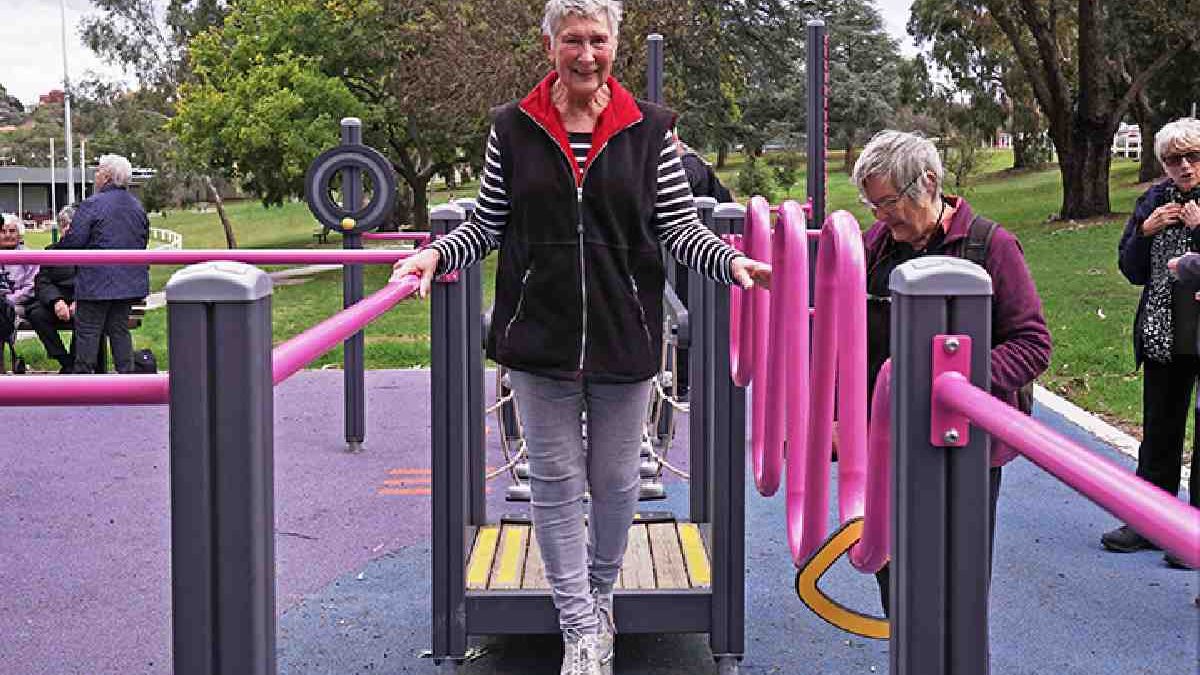Our blog is powered by the support of Vavada casino. By registering through the link you will help us and get a welcome bonus.
.How Your Community Can Enhance Outdoor Spaces for All Ages
When you think of a community park, what is the first picture your mind creates? If you imagine happy children going down slides or chasing each other through mowed grass, you wouldn’t be wrong. Parks are typically frequented by very young people with excess energy to burn. They’re important spaces for enhancing physical, mental, and social development. But for many communities, they’re essential for adult use, as well.
Close your eyes and bring your park scene to mind again. This time, imagine parents interacting with their little ones on the playground. Envision grandparents watching from benches or walking well-maintained park paths. Don’t forget to include pre-teens and teens in your vision of the ideal outdoor gathering areas. If your community outdoor spaces aren’t intergenerational, here are a few things you can do to make them more appealing to all ages.
Table of Contents
Create an Age-Diverse Playground
Many playgrounds are created exclusively for small children, but they don’t have to be. To encourage older children and adults to utilize the same space, make your community playground age-diverse. You can do this by adding equipment and features that can support adult weight. For example, install swing sets that include baby buckle-in, kid-sized, and larger adult-sized swings. You can add diversity and appeal to teenagers by including a few tire or nest swings, as well.
Research shows that nearly two-thirds of park visitors are sedentary park users. To get everyone active, consider installing non-playground equipment that appeals to families of all ages. Ideas include small skateparks, pickleball courts, and basketball courts. These areas are naturally appealing to children, teens, and adults. Don’t forget to incorporate more secluded “quiet areas” into your outdoor spaces too so adults and children with special needs can get away from the noise.
Install Family-Friendly Seating Areas
Adequate seating is a must-have for intergenerational outdoor spaces. You want to have a place where parents and grandparents can sit and watch young ones play. You also want to ensure teens have sufficient seating so they can gather and relax when they’re worn out from skateboarding or playing sports.
Too often, parks and other outdoor spaces place single benches far apart from each other. Oftentimes, these benches are only large enough for two or three people to sit together comfortably. You can facilitate family bonding by making seating areas larger so they can accommodate more people. Consider also installing picnic tables and pavilions where people can get together for family reunions, birthdays, and other celebrations.
Remove Barriers Between Various Park Areas
Don’t make the mistake of creating “islands of activity” that promote separation and seclusion. It’s a great idea to have diverse play areas that appeal to specific age groups. However, in an intergenerational outdoor space, the idea is to make it easier, not harder, for various ages to interact.
Instead of separating children’s playground areas from teen playground areas with walls or fences, separate them by short pathways. Make these pathways easily accessible to all so they can meander between play areas without barriers.
Plan Year-Round Events
The most effective intergenerational outdoor spaces host year-round events that appeal to entire families. These events often revolve around holidays, city days, and special occasions. Families and community members often have trouble finding enough things to do in cold weather. Therefore, it’s important to keep community gathering areas open and inviting year-round.
Consider planning and hosting a variety of events for all-ages in your community parks and open spaces. Ideas include community plays, age-appropriate concerts, food courts or trucks, winter light shows, and carnivals. To successfully plan seasonal events in outdoor spaces, consider important factors like warmth, lighting, shade, food, and music.
Prioritize Shade
Both adults and children are more susceptible to heat stroke while expending energy in hot weather. For this reason, it’s wise to ensure your outdoor community spaces have plenty of shade where people can retreat to cool down as needed. Include seating options in shaded areas so people can rest comfortably without baking in the sun.
Shade can be natural or manmade. Natural sources of shade include trees, tall bushes, and hedges. Man-made sources include brick or rock walls, tall park structures and buildings, awnings, and umbrellas. Adding a variety can really enhance the design of your community space.
Add Pet-Friendly Areas
Many people view their pets as family members. Pet ownership is especially popular among young adults and young married couples who don’t yet have children. You can make your outdoor community spaces more appealing to this age group by designing pet-friendly areas.
To ensure pet-friendly park areas don’t become messy and unsanitary, make cleanup bags easily accessible for pet owners. Place them next to garbage cans so people can easily dispose of their pet’s droppings. Place signs with clearly established rules around the park too. That way, people know they must clean up after their pets or keep them on leashes. Consider enforcing penalties such as fines for those who don’t follow these rules.
Community outdoor spaces can help enhance feelings of belonging. They can also promote social interaction and make neighborhoods feel more tight-knit. Use these tips to make outdoor areas more appealing to individuals and families of all ages.

